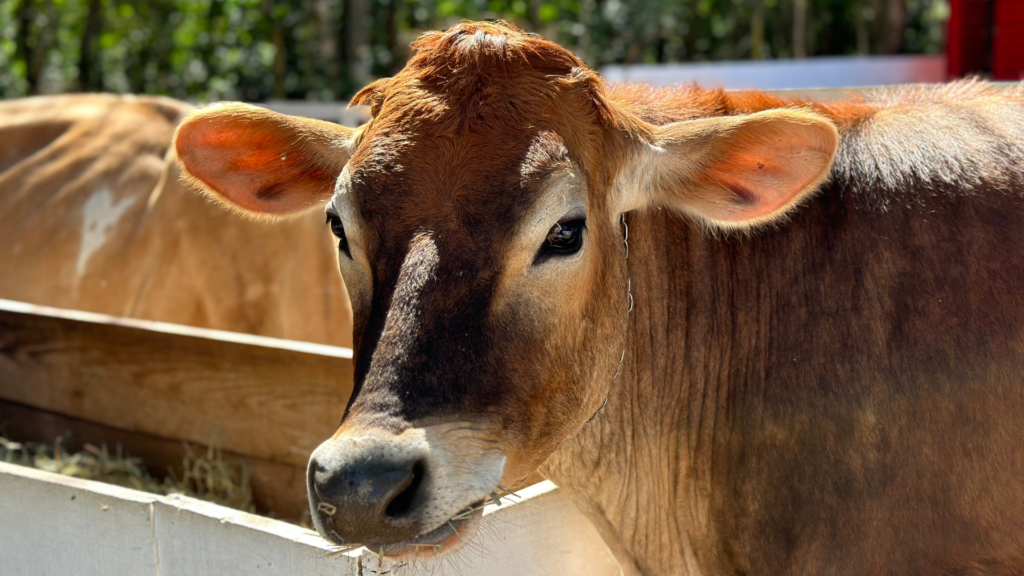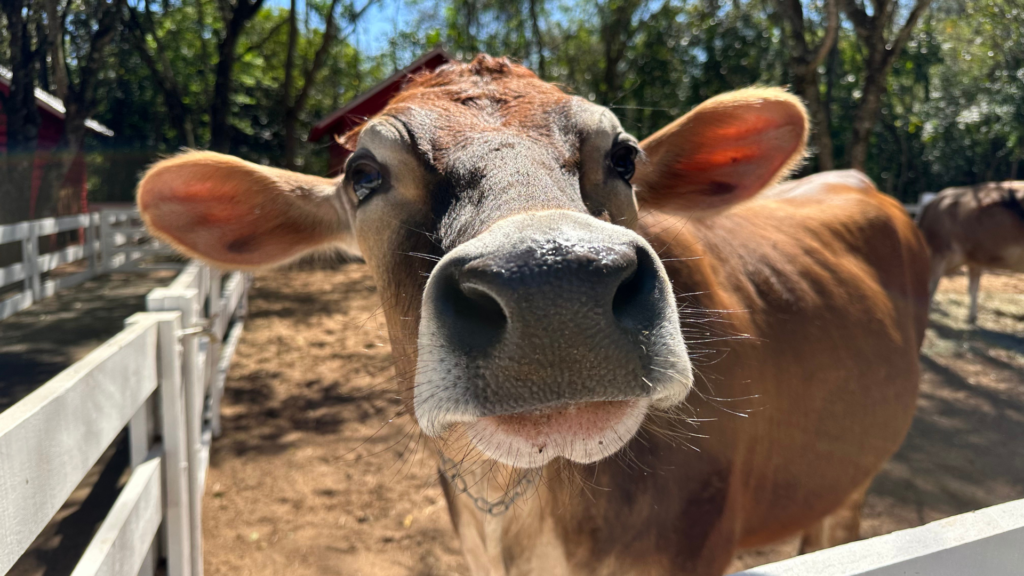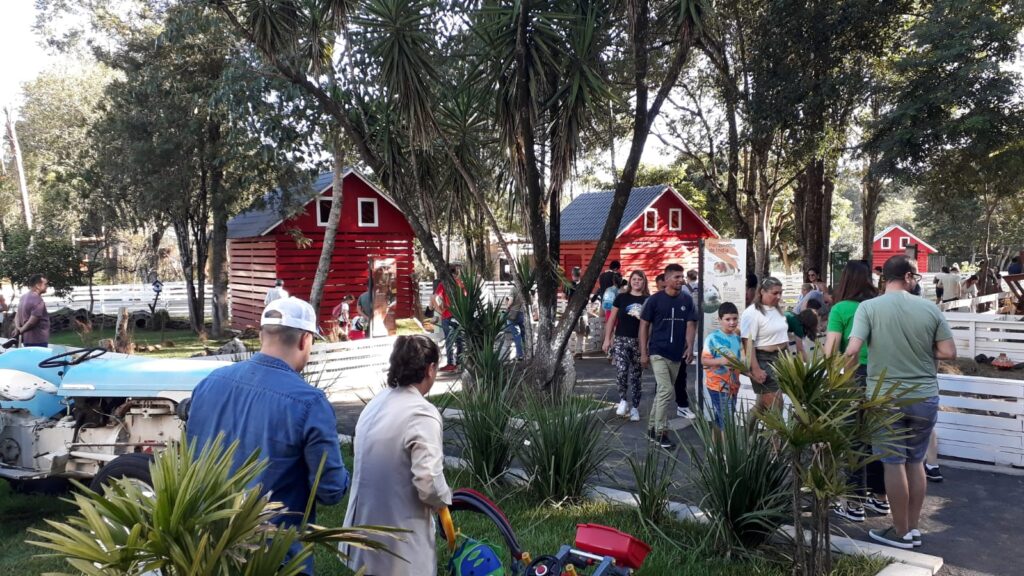
Jersey cows, a breed of ruminant originating from the Jersey Islands in England, have a fascinating history and distinct characteristics that make them stand out on the livestock scene. With a coat color that varies between yellow and light brown, these small animals have an average weight of between 350 kg for females and up to 500 kg for males.
Unique Characteristics and Quality Milk Production of the Jersey lineage

The distinctive feature of Jersey cows is the quality and production of their milk. With a higher protein, calcium and fat content, their milk has a richer taste and high nutritional value. These animals are capable of producing between 18 and 20 liters of milk a day, and can reach an impressive 25 liters when properly managed. This productive capacity combined with feed efficiency makes the Jersey a beneficial choice for farmers.
Jersey's Environmental Contribution and Sustainability

Breeding Jersey cows has significant advantages for the environment. Due to the smaller size of these animals and the nutritional density of the milk they produce, there is a reduction in the resources needed to care for them. The amount of water, food and land used is less compared to other breeds of dairy cows. In addition, Jerseys play a significant role in nature, as they reduce carbon emissions, contributing to tackling climate change, as stated by sustainability expert Dr. Jude Capper.
Global Importance and the Arrival of the Jersey Breed in Brazil
The contribution of Jersey cows to humanity is undeniable. With their ability to provide nutritious and healthy food, these animals play a crucial role, especially in regions with economic problems. In Brazil, the history of Jerseys begins at the end of the 19th century, when they were introduced in 1896 from England, where they were part of Queen Victoria's farm. Over the years, their presence was consolidated, resulting in the officialization of breeding grounds by the Ministry of Agriculture in 1930 and the foundation of the first Jersey Cattle Breeders Association in 1938, in Rio de Janeiro.
Adaptation and Versatility of Jersey cattle
Despite their European roots, Jersey cows are surprisingly remarkably adaptable, especially to a variety of environments and climatic conditions. They thrive even in hot climates, highlands and dry regions, which contributes to their wide distribution and success in a variety of contexts. Jersey cows have a rich history and a significant impact, from their origin in England to their global spread and importance in sustainable milk production. Their ability to provide nutritional, economic and environmental benefits makes them an outstanding breed in the livestock world. And you can meet these animals at our Mini Farm.






